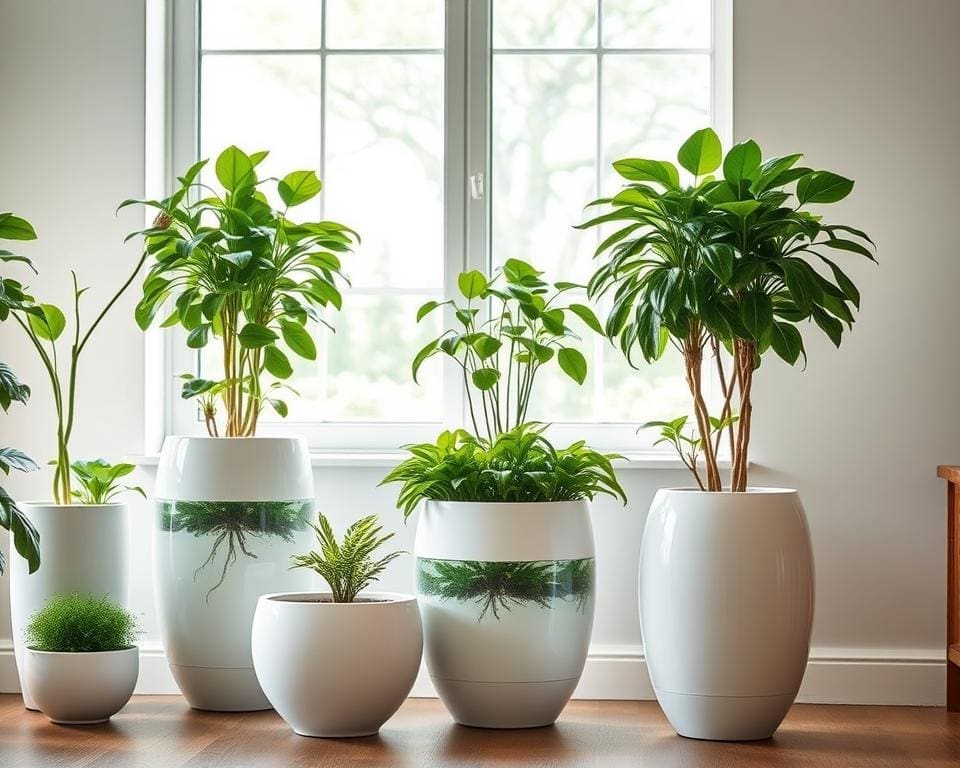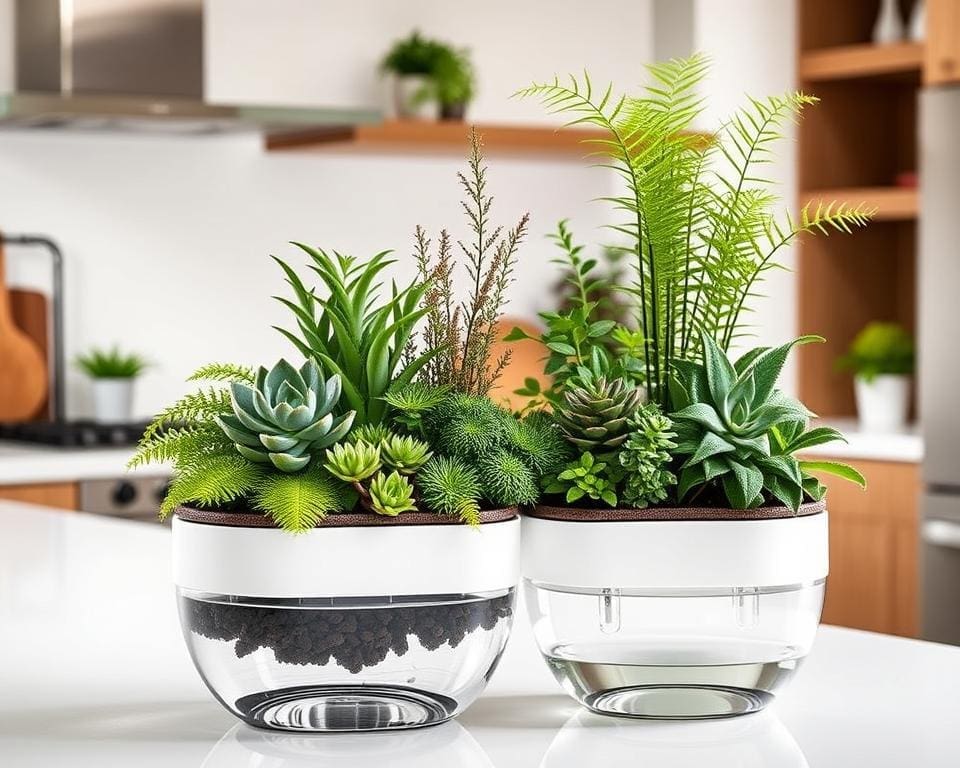In a world where time is of the essence, self-watering planters for busy plant parents have emerged as a game-changer in the realm of indoor gardening. These ingenious solutions not only alleviate the daily burden of watering but also create optimal conditions for plant growth. For those passionate about incorporating greenery into their homes, understanding the benefits and functionality of self-watering systems is paramount.
With the rise of low-maintenance plants, these planters provide an effortless approach to plant care. Embracing these tools inspires a new wave of plant lovers to cultivate their indoor gardens without the fear of neglect. For essential plant care tips, explore methods that seamlessly integrate into a hectic lifestyle, allowing each plant to flourish.
Discover how self-watering systems can transform your approach to gardening and ensure that even the busiest individuals can maintain a vibrant indoor environment. Learn more about the innovative techniques that support effective plant care while adhering to your fast-paced routine.
Understanding Self-Watering Planters
Self-watering planters represent a remarkable innovation in the world of plant parenting and gardening systems. These planters feature a unique reservoir system that allows plants to absorb water through capillary action. This extremely beneficial mechanism ensures that plants receive consistent hydration without the risk of overwatering, helping busy plant parents maintain healthy greenery.
Designed in various styles and sizes, self-watering planters can accommodate an array of plant types, making them suitable for diverse home environments. Their construction typically includes a wicking system, promoting optimal moisture retention while ensuring proper drainage. This understanding of how self-watering planters operate empowers plant enthusiasts to choose the best options for their indoor gardening adventures.

Benefits of Self-Watering Planters for Indoor Gardening
The benefits of self-watering planters are numerous, particularly for those who embrace indoor gardening. These innovative planters significantly enhance plant care tips, making it easier for busy individuals to maintain their green spaces. One of the most compelling advantages is the time efficiency they provide. With less frequent watering required, plant parents can focus on enjoying their plants rather than spending hours on upkeep.
Self-watering systems minimise the risk of overwatering, a common concern for many gardeners. By maintaining consistent moisture levels, the risk of nutrient leaching is greatly reduced, ensuring plants thrive. This consistency fosters strong, healthy growth in various indoor plants, from herbs to succulents.
Flexibility stands out as another notable advantage of self-watering planters. They cater to a wide range of plant types and sizes, making them an excellent choice for any indoor setting. As urban living spaces continue to shrink, the capabilities of self-watering planters become increasingly valuable, allowing for efficient cultivation of greenery even in the smallest of homes.
Self-Watering Planters for Busy Plant Parents
Busy plant parents often juggle numerous responsibilities, making time-saving gardening solutions essential. Self-watering planters provide an innovative approach to indoor gardening, allowing individuals to nurture their green spaces without the constant worry of maintaining regular watering schedules. These thoughtful designs facilitate a harmonic balance between efficient plant care and the demands of a busy lifestyle.
Time-Saving Advantages
The innovative nature of self-watering planters for busy plant parents lies in their simplicity. These planters can dramatically reduce the frequency of watering while ensuring that plants receive the moisture they need. With a built-in reservoir, they provide consistent hydration, freeing up precious time for individuals who might otherwise find themselves constantly tending to their plants. Embracing this approach elevates the gardening experience, allowing for more enjoyment and less maintenance.
Consistency in Watering
Reliability is a fundamental benefit of self-watering systems. Consistent watering helps to establish healthy plant growth, as it mitigates stress caused by fluctuations in moisture levels. For busy plant parents, knowing their plants are receiving a steady supply of water provides peace of mind. This aspect is particularly advantageous for those who travel frequently or maintain hectic schedules, as any concerns about plant care can be alleviated.
Choosing the Right Self-Watering Planter
Finding the perfect self-watering planter involves careful consideration of both materials and sizes to cater to individual plant needs and aesthetic preferences. The choice of material significantly impacts plant vitality and the overall look of your indoor garden.
Material Options: Plastic vs. Terracotta
When choosing self-watering planters, the material plays a crucial role. Plastic planters offer lightweight convenience and affordability, making them suitable for a variety of spaces. Their flexibility allows for easy rearrangement and adaptability in any environment. In contrast, terracotta planters are porous, promoting excellent air circulation to plant roots. This characteristic can support healthier plant growth, especially for those needing more attention to their watering habits. Weighing the pros and cons of plastic vs. terracotta helps ensure your plants thrive.
Size Matters: Selecting Planters for Different Spaces
Planter sizes directly influence the well-being of your plants. Selecting the appropriate size ensures that each plant has enough room to grow while efficiently managing water retention. Smaller spaces may benefit from compact planters, while larger areas can accommodate bigger sizes that allow for a diverse array of plants. It is essential to consider how different planter sizes integrate into your living environment. Thoughtful planning in your choices contributes to a lush, vibrant indoor garden.
Low-Maintenance Plants for Self-Watering Planters
For busy plant parents, selecting the right plants for self-watering planters transforms indoor gardening into a hassle-free experience. Low-maintenance plants not only look fabulous but also require minimal attention, making them perfect for those with a bustling lifestyle. Choosing robust options ensures that even the most novice gardeners can flourish.
Top Choices for Busy Plant Parents
When it comes to low-maintenance selections, several plants stand out:
- Pothos: Renowned for its trailing vines, this plant thrives in various light conditions and needs infrequent watering.
- Snake Plant: A champion in resilience, it can survive in low light and only requires watering every couple of weeks.
- Peace Lily: This stunning plant not only purifies the air but also tolerates low light and infrequent watering.
Care Requirements of Popular Indoor Plants
Understanding care requirements is fundamental for success. Here are important points when choosing low-maintenance plants:
- Assess light preferences to ensure proper placement within the home.
- Check water levels in self-watering planters to avoid over-saturation.
- Monitor growth conditions, adjusting as necessary to optimise health and beauty.
By nurturing these low-maintenance plants in self-watering planters, busy plant parents can enjoy lush greenery with little effort. Whether you’re selecting from beautiful options or considering a stylish plant stand, your indoor space can flourish effortlessly. Consider how plant stands can enhance the aesthetic of your spaces by exploring more about their benefits here.
Plant Care Tips for Self-Watering Systems
Self-watering systems simplify the journey of indoor gardening, but to ensure plants flourish, specific plant care tips are essential. Regular upkeep enhances the effectiveness of these systems. Checking water levels frequently helps to maintain optimal moisture and prevents issues like root rot or plants drying out.
Utilising high-quality potting soil is crucial. A soil mix that retains moisture while allowing excess water to drain is ideal for supporting healthy root development. This balance prevents the waterlogged conditions that can lead to problems.
Optimising fertilisation routines plays a significant role in promoting plant vitality. Slow-release fertilisers provide a steady flow of nutrients, ensuring plants receive the appropriate nourishment without overwhelming them. Regularly reviewing the frequency and quantity of fertiliser can lead to thriving greenery.
Incorporating these plant care tips allows busy plant parents to take full advantage of self-watering systems. With a little attention, maintaining lush, vibrant indoor gardens becomes a rewarding endeavour.
Gardening Hacks for Busy Plant Parents
For busy plant parents juggling multiple responsibilities, employing clever gardening hacks can significantly elevate the plant care experience. By integrating efficient watering hacks for plants, such as automatic timers or moisture sensors, you can effortlessly streamline your watering schedules. This not only helps prevent the risk of your beloved plants being neglected but also gives you the freedom to focus on other aspects of your busy life.
Implementing Efficient Watering Hacks
Another effective tip is to group plants according to their water requirements, allowing you to create a more organised system for plant care routines. This method not only saves time but ensures each plant receives the hydration it needs. Incorporating these simple yet impactful watering hacks will undoubtedly lead to healthier plants and a more enjoyable gardening experience.
Optimising Plant Care Routines
Moreover, optimising your plant care routines can be a game changer. Scheduling regular monthly checks for pests and diseases, rotating your plants for even light distribution, and remembering to prune them as needed will keep your indoor garden thriving. Implementing these gardening hacks allows busy plant parents to maintain a flourishing indoor jungle while working harmoniously with a hectic schedule.









